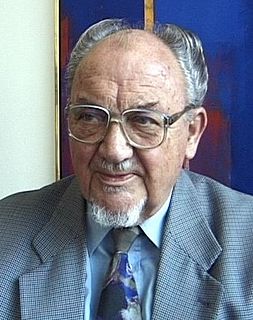The politics of the Faroe Islands a "constituent country" of the Kingdom of Denmark, function within the framework of a parliamentary representative democratic dependency, whereby the Prime Minister of the Faroe Islands is the head of government, and of a multi-party system. The Faroe Islands are politically associated with the Kingdom of Denmark, but have been self-governing since 1948. Executive power is exercised by the government. Legislative power is vested in both the government and the Løgting. The judiciary is independent of the executive and the legislature and the responsibility of Denmark. As of October 25, 2007, the Faroe Islands became one electoral district.

The Inatsisartut, also known as the Parliament of Greenland in English, is the unicameral parliament of Greenland, a autonomous country in the Danish realm. Established in 1979, it meets in Inatsisartut, on the islet of Nuuk Center in central Nuuk.
The Faroe Islands elects on national level a legislature. The Faroese Parliament has 33 members of parliament, elected for a four-year term by proportional representation. The Faroe Islands have a multi-party system, with numerous parties in which a single party normally does not have a chance of gaining power alone, and therefore the parties must work together in order to form a coalition government.

The Faroe Islands are divided into 30 municipalities, six regions/shires and since 2007 there has been only one constituency, earlier there were seven constituencies. Each region has one sheriff (sýslumaður).
Sjálvstýri is a liberal and autonomist political party in the Faroe Islands. It is currently led by the Mayor of Klaksvík Jógvan Skorheim.

The Union Party is a conservative-liberal and agrarian political party in the Faroe Islands. The party wants to maintain the Faroe Islands union with Denmark. On 24 October 2015 Bárður á Steig Nielsen succeeded Kaj Leo Johannesen as party leader.

The Faroe Islands national football team, represents the Faroe Islands in association football and is controlled by the Faroe Islands Football Association. The Faroe Islands became a member of FIFA in 1988 and UEFA in 1990 and is the fourth smallest UEFA country by population.

Faroese people or Faroe Islanders are a North Germanic ethnic group and nation native to the Faroe Islands. The Faroese are of mixed Norse and Gaelic origins. About 21,000 Faroese live in neighbouring countries, particularly in Denmark, Iceland and Norway. Most Faroese are citizens of the Kingdom of Denmark, in which the Faroe Islands are a constituent nation. The Faroese language is one of the North Germanic languages and is closely related to Icelandic and to western Norwegian varieties.

General elections were held in Denmark on 23 October 1979. The Social Democratic Party remained the largest in the Folketing, with 68 of the 179 seats. Voter turnout was 85.6% in Denmark proper, 65.4% in the Faroe Islands and 50.3% in Greenland.

General elections were held in Denmark on 23 January 1968. The Social Democratic Party remained the largest in the Folketing, with 62 of the 179 seats. Voter turnout was 89.3% in Denmark proper, 56.6% in the Faroe Islands and 56.3% in Greenland.

Folketing elections were held in Denmark on 6 July 1920, except in the Faroe Islands, where they were held on 3 August. The result was a victory for Venstre, which won 51 of the 140 seats. Voter turnout was 74.9% in Denmark proper and 46.4% in the Faroe Islands.

Folketing elections were held in Denmark on 3 April 1939, except in the Faroe Islands where they were held on 19 April. They followed a dissolution of both chambers in order to call a referendum on changing the constitution. The referendum was held on 23 May but failed due to a low voter turnout. The result of the elections was a victory for the Social Democratic Party, which won 64 of the 149 seats. Voter turnout was 79.2% in Denmark proper and 47.8% in the Faroes.

Folketing elections were held in Denmark on 28 October 1947, except in the Faroe Islands where they were held on 18 February 1948. The Social Democratic Party remained the largest in the Folketing, with 57 of the 150 seats. Voter turnout was 85.8% in Denmark proper and 60.1% in the Faroes.
The Danish Landsting election of 1943 was held on 6 April 1943, with the exception that the electors were elected on 23 March. Along with the corresponding Folketing election, it was the first election during the German occupation, and although many people feared how the Germans might react to the election, the event took place peacefully.

The following outline is provided as an overview of and topical guide to the Faroe Islands:
Events from the year 1932 in Denmark.
General elections were held in the Faroe Islands on 22 January 1924. The result was a victory for the Union Party, which won 13 of the 23 seats in the Løgting.

The Faroese independence movement or the Faroese national movement is a political movement which seeks the establishment of the Faroe Islands as a sovereign state outside Denmark. Reasons for complete autonomy include the linguistic and cultural divide between Denmark and the Faroe Islands as well as their lack of proximity to one another; the Faroe Islands are about 990 km from Danish shores.












